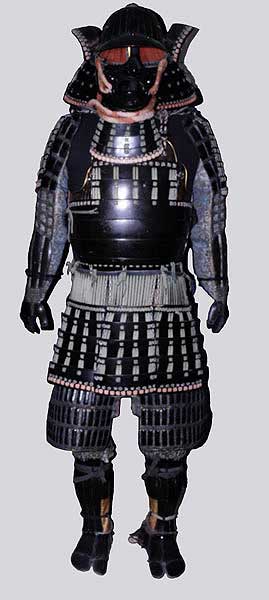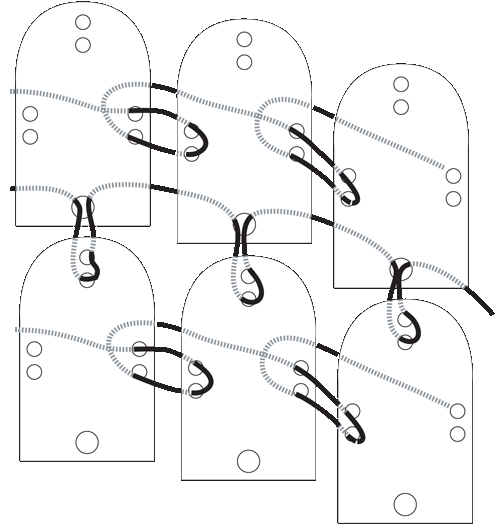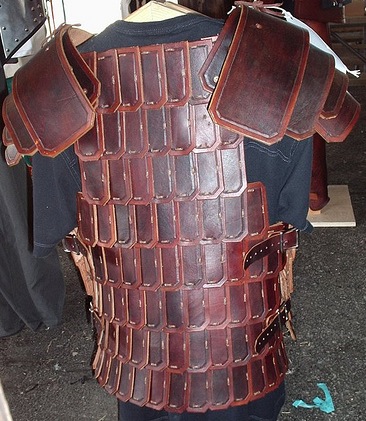Lamellar (V7)
An Armor (V7)
The Rulebook (V7) defines it as "plates that have been joined in an overlapping fasion by cord or chain link."
This definition is pretty accurate, though lamellar can be constructed other ways.
- A form of byzantine lamellar the lames were laced and later riveted to strips of leather and the strips were then laced together in the normal fassion through the holes in the lames.
- Lamellar is truely an international armour being used from Scandinavia to Africa to Japan and many places inbetween.
- By Amtgard's current definitons Locking Scale (V7) is lamellar.
- Japanese Lamellar aka Kozane is traditionally made from over 1/8" thick chinese water buffalo rawhide and like most other Japanese armour it has the hell lacquered out of it to the point where it can look like plactic. The lames are normally laced together very tightly negating any mobility lamellar noramlly permits and like other forms of Japanese armour the laceing can get downright gaudy.
About Lamellar
Lamellar armour is a kind of personal armour consisting of small plates (lames) which are laced together in parallel rows. Lamellar differs from Scale (V7) by not needing a backing for the scales. It is made from pieces of lacquered leather, iron, steel or horn held together with silk, leather thongs, or cotton thread. When the lames are made of leather they would often be hardened by a process such as cuir bouilli or lacquering.
Lamellar was often worn as augmentation to existing armour, such as over a mail hauberk. The lamellar cuirass was especially popular with the Rus, as well as Mongols, Turks, Avars, and other steppe peoples as it was simple to create and maintain.
Lamellar is pictured in many historical sources on Byzantine warriors, especially heavy cavalry. It is thought that it was worn to create a more deflective surface to the rider's armour, thus allowing blades to skim over, rather than strike and pierce. Recent studies by Timothy Dawson of the University of New England, Australia, suggest that Byzantine lamellar armour was significantly superior to chain mail.
Sumerian and Ancient Egyptian bas-reliefs depicting soldiers have been argued as portraying the earliest examples of lamellar armour, particularly on chariot drivers, but it is not until the time of the Assyrians circa 900–600 BC that possible examples of lamellar begin to appear in the archaeological record. Among finds of Assyrian armour (often individual or unconnected scales) there are examples that can clearly be classified as scale armour[citation needed] as well as others that appear to be lamellar, and there exist a large number of finds whose function has proven difficult to determine. The extent to which either type was used is a debated topic. The earliest definite instance of true lamellar was found in China when twelve suits of lacquered lamellar were uncovered in a tomb at Sui-hsien, Hupei (dated to c. 433 BC). Lamellar was used by various cultures from this time up through the 16th century. It is generally associated with the Japanese Samurai, although the armour came to Japan from contact with Tang Dynasty China. It is also associated with the steppe people of southern Russia and Mongolia such as the Scythians and Sarmatians, and the Spartan Army.


